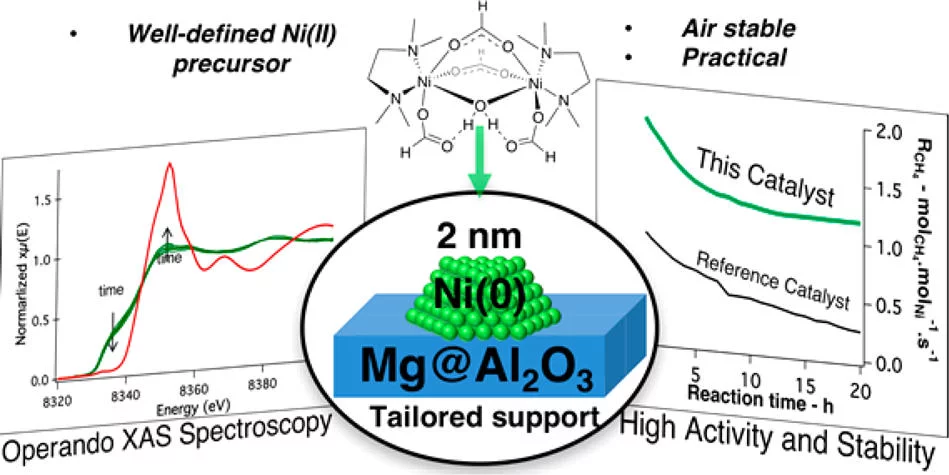Syngas production via the dry reforming of methane (DRM) is a highly endothermic process conducted under harsh conditions; hence, the main difficulty resides in generating stable catalysts. This can, in principle, be achieved by reducing coke formation, sintering, and loss of metal through diffusion in the support. [{Ni(μ2-OCHO)(OCHO)(tmeda)}2(μ2-OH2)] (tmeda = tetramethylethylenediamine), readily synthesized and soluble in a broad range of solvents, was developed as a molecular precursor to form 2 nm Ni(0) nanoparticles on alumina, the commonly used support in DRM. While such small nanoparticles prevent coke deposition and increase the initial activity, operando X-ray Absorption Near-Edge Structure (XANES) spectroscopy confirms that deactivation largely occurs through the migration of Ni into the support. However, we show that Ni loss into the support can be mitigated through the Mg-doping of alumina, thereby increasing significantly the stability for DRM. The superior performance of our catalytic system is a direct consequence of the molecular design of the metal precursor and the support, resulting in a aximization of the amount of accessible metallic nickel in the form of small nanoparticles while preventing coke deposition.
Contact
Dr Olga SafonovaSuperXAS beamline
Laboratory for Synchrotron Radiation and Femtochemistry (LSF)
Swiss Light Source, Paul Scherrer Intitute
5232 Villigen-PSI, Switzerland Telephone: +41 56 310 58 05
E-mail: olga.safonova@psi.ch
Original Publication
Molecularly Tailored Nickel Precursor and Support Yield a Stable Methane Dry Reforming Catalyst with Superior Metal UtilizationTigran Margossian, Kim Larmier, Sung Min Kim, Frank Krumeich, Alexey Fedorov, Peter Chen, Christoph R. Müller, and Christophe Copéret
JACS, 26 April 2017
DOI: 10.1021/jacs.7b01625
